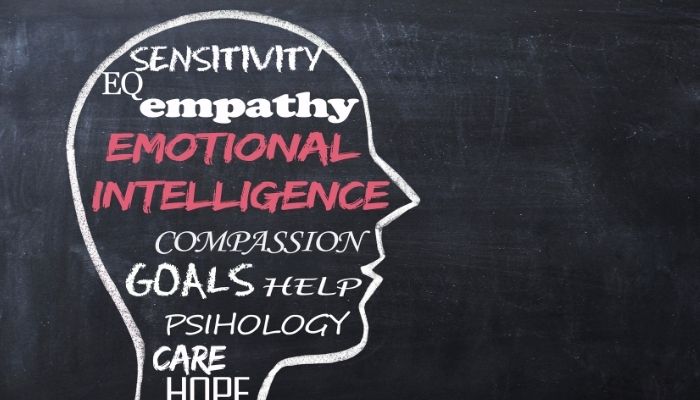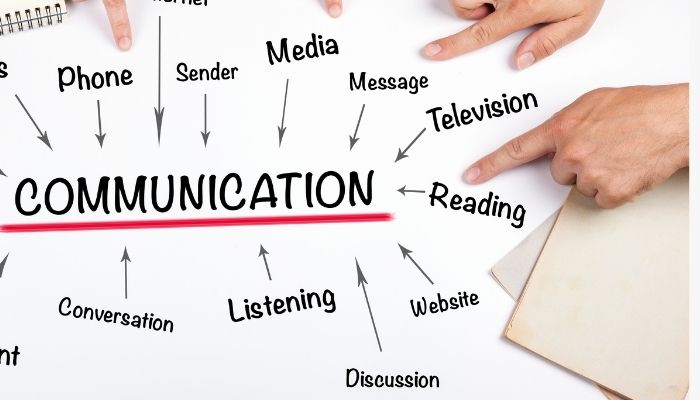“Leadership is not about being in charge. It’s about taking care of those in your charge.” – Simon Sinek
“The greatest leader is not necessarily the one who does the greatest things. He is the one that gets the people to do the greatest things.” – Ronald Reagan
Leadership is not just about guiding others; it’s about igniting the flame of inspiration, driving collective growth, and propelling your team toward extraordinary achievements.
Imagine the impact of effective communication that connects hearts and minds, the strength of empathy that nurtures a culture of trust, and the strategic thinking that sets long-term goals. These skills, and more, lie at the heart of successful leadership, enabling you to conquer obstacles, maximize productivity, and achieve remarkable results.
To unlock this remarkable potential, we present to you 17 secret leadership skills that will revolutionize the way you lead. These hidden gems, when mastered, will empower you to create a high-performing team, foster innovation, and navigate challenges with finesse.
Top 17 Secret Powerful Leadership Skills to Unleash Your Leadership Potential

Let’s check the secret skill you need to unleash your true leadership potential.
The Power of Empathy: Connecting with your team on a deeper level.
Add image here

“Empathy is the currency that fuels meaningful connections within teams.” – Maya Angelou
Empathy is a powerful leadership skill that allows you to connect with your team members more deeply. It involves understanding and sharing their emotions, perspectives, and experiences. When leaders demonstrate empathy, they create a supportive and inclusive environment where individuals feel valued and understood.
Leaders can build trust, foster better collaboration, and enhance team morale by actively listening, showing compassion, and considering others’ viewpoints. Empathy enables leaders to make more informed decisions, address conflicts effectively, and support and encourage their team members to thrive.
To do that,
- Put yourself in their shoes and try to understand their feelings and perspectives.
- Pay attention to non-verbal cues and emotions to better grasp their underlying needs.
- Validate their emotions and experiences, making them feel heard and understood.
- Practice empathy in conflict resolution, seeking to find mutually beneficial solutions.
- Demonstrate empathy by offering help and support during challenging times.
- Continuously educate yourself on different perspectives and cultural sensitivities..
- Empower team members to take ownership of their work while providing guidance and support.
- Celebrate individual and team achievements, recognizing their efforts and contributions.
- Continuously refine and improve your empathetic leadership skills through self-reflection and learning opportunities.
Active Listening: Understanding and valuing your team members’ perspectives.

Add image here
“Active listening is the cornerstone of effective teamwork; it amplifies understanding and strengthens bonds.” – Stephen Covey
Active listening is a vital leadership skill that involves fully engaging with your team members’ communication to understand and value their perspectives. It goes beyond simply hearing words; it requires focused attention, empathy, and genuine interest in what others say.
By practicing active listening, leaders create a space for open dialogue and mutual respect, fostering stronger relationships and teamwork. Through attentive body language, asking thoughtful questions, and summarizing key points, active listening allows leaders to gain deeper insights, uncover hidden concerns, and demonstrate their commitment to understanding and appreciating the diverse viewpoints of their team. To do that,
- Give your full attention, avoid distractions, and maintain eye contact.
- Summarize and paraphrase key points to ensure understanding and clarify any misunderstandings.
- Ask relevant and thoughtful questions to delve deeper into your team members’ perspectives.
- Practice patience and avoid rushing or cutting conversations short.
- Be aware of your biases and preconceptions, and strive to maintain objectivity.
- Seek feedback and confirmation to ensure an accurate interpretation of your team members’ messages.
- Encourage and model active listening behavior to foster a culture of open communication.
- Value diverse perspectives and appreciate the range of ideas and insights shared.
Emotional Intelligence: Managing your emotions and recognizing others’.

Add image here
“Emotional intelligence is the compass that guides us to a deeper understanding of ourselves and others.” – Daniel Goleman
Ignite the flame of emotional intelligence within you and witness the transformation it brings to your leadership. Unleash the power of self-awareness and self-regulation, harmonizing your emotions with unwavering composure. Look beyond words, and comprehend the unspoken emotions of those around you with an empathetic gaze.
Nurture a culture of emotional intelligence, forging unbreakable connections that propel your team toward greatness. Embrace the art of understanding and valuing emotions, and watch as the symphony of empathy orchestrates extraordinary achievements. Elevate your leadership to extraordinary heights with the unparalleled gift of emotional intelligence. For that,
- Cultivate self-awareness, acknowledging and understanding your own emotions.
- Master self-regulation, staying calm and composed in challenging situations.
- Sharpen social awareness, attuning yourself to the emotions and needs of others.
- Develop relationship management skills, fostering strong connections based on empathy and understanding.
- Embrace continuous growth, seeking opportunities to enhance your emotional intelligence through learning and practice.
Effective Communication: Conveying ideas clearly and fostering open dialogue.

Add image here
“Clear communication is the oxygen that breathes life into collaboration and propels teams toward success.” – Simon Sinek
Master the art of effective communication and wield it as your secret weapon to conquer challenges and forge unparalleled connections. Command attention and inspire action through your words, seamlessly conveying ideas with unwavering clarity.
Unleash the power of active listening, captivating minds, and inviting transformative dialogues. Harness the authority of your voice to ignite collaboration and transcend communication barriers. Elevate your leadership to new heights by unlocking the potential of effective communication, paving the way for shared understanding, unwavering synergy, and monumental achievements. To achieve that,
- Craft messages precisely and clearly, leaving no room for ambiguity or misinterpretation.
- Use impactful language that resonates with your audience, evoking emotions and capturing attention.
- Encourage open dialogue by creating a safe and inclusive space for ideas to be freely shared.
- Foster empathy and understand the unique backgrounds and experiences that shape communication styles.
- Seek feedback and clarification to ensure your message has been accurately received and understood.
- Adapt your communication style to cater to diverse audiences and their specific needs.
- Utilize storytelling techniques to engage and captivate listeners, bringing ideas to life through compelling narratives.
- Continuously improve your communication skills through training, workshops, and seeking mentorship or coaching.
Adaptability: Being flexible and responsive to changing circumstances.

Add image here
“Adaptability is the secret ingredient that allows teams to embrace change and thrive in a rapidly evolving world.” – Charles Darwin
In a world of constant evolution, empower yourself with the extraordinary skill of adaptability. Embrace the ebb and flow of change, knowing it is your greatest catalyst for growth. With empathetic understanding, effortlessly adjust your sails to navigate through turbulent waters.
Let flexibility and responsiveness be your guiding beacons, illuminating the path to success despite uncertainty. Embrace the beauty of transformation, for it is in the dance with change that you uncover untapped potential and seize remarkable opportunities. To achieve this skill,
- Develop a flexible mindset, ready to adapt plans and strategies when circumstances shift.
- Build a network of support and collaboration, seeking diverse viewpoints and expertise.
- Embrace ambiguity and uncertainty, maintaining composure and confidence in facing challenges.
- Cultivate resilience, bouncing back from setbacks and leveraging them as stepping stones.
- Embrace change as an opportunity for innovation, exploring new possibilities and pushing boundaries.
- Stay agile and responsive, actively monitoring and evaluating changing circumstances.
- Seek feedback and learn from past experiences, applying insights to future adaptations.
- Embrace a proactive approach, anticipating and preparing for potential shifts and challenges.
Use of Project Management Software

Add image here
“Harnessing the power of project management software unlocks a new level of efficiency and productivity.” – Sheryl Sandberg
Enter a realm of efficiency and seamless collaboration with the transformative power of project management software. Harness the capabilities of this digital tool to elevate your leadership and streamline your projects. From task assignment and progress tracking to resource allocation and timeline management, project management software empowers you to centralize project information, facilitate communication, and drive productivity.
Access real-time data and insightful analytics to make informed decisions, identify bottlenecks, and optimize project performance. Embrace this innovative solution to conquer complexity, enhance organization, and easily achieve remarkable outcomes. To unleash this skill,
- Research and identify project management software that aligns with your team’s needs and objectives.
- Familiarize yourself with the features and functionalities of the selected software.
- Explore tutorials, online resources, and user guides to understand the software’s capabilities comprehensively.
- Provide training sessions or access to learning resources to equip team members with the necessary skills to utilize the software.
- Create a centralized project workspace within the software, organizing tasks, deadlines, and milestones.
- Assign tasks and responsibilities to team members within the software, ensuring clarity and accountability.
- Utilize communication features, such as messaging and file sharing, to facilitate seamless collaboration and information exchange.
- Regularly update and monitor the project’s progress within the software, tracking milestones and identifying potential issues.
Strategic Thinking: Developing long-term goals and plans.

Add image here
“Strategic thinking illuminates the path to success, transforming dreams into tangible long-term goals.” – Peter Drucker
Imagine yourself as the protagonist in a thrilling adventure, where strategic thinking becomes your compass guiding you through uncharted territories. As you embark on this narrative journey, you become the master storyteller of your destiny.
With each decision, you paint vivid strokes that shape your long-term goals and plans. It’s a saga of vision and foresight, of mapping out the future with purpose and precision. Like a skilled navigator, you navigate the twists and turns, anticipating obstacles and seizing opportunities. Strategic thinking empowers you to craft a tale of triumph and leave an indelible mark on the world. To achieve this,
- Embrace curiosity and explore different perspectives, expanding your vision beyond the immediate horizon.
- Conduct in-depth research and analysis to uncover insights that inform your long-term goals.
- Foster a culture of innovation and encourage team members to contribute fresh ideas and creative solutions.
- Break down complex problems into manageable pieces, allowing for strategic decision-making.
- Anticipate future trends and changes, preparing contingency plans to adapt to evolving circumstances.
- Continuously evaluate and adjust your long-term goals and plans based on feedback and new information.
- Embrace flexibility and agility, allowing for course corrections and optimization as needed.
Decision-Making: Making informed choices for the benefit of the team.

Add image here
“In the realm of teamwork, informed decision-making is the compass that leads to collective achievement.” – Warren Buffett
Imagine yourself as the helmsman of a majestic vessel entrusted with the responsibility of charting a course toward victory. Decision-making becomes your compass, guiding you through turbulent waters. As you stand at the helm, your choices have the power to uplift and unite the team, steering them towards shared goals.
Like a skilled navigator, you gather wisdom from the winds of information, combining it with your intuition. With each decision, you shape the team’s destiny, harmonizing individual aspirations with the collective vision. Informed choices become the wind in your sails, propelling the team toward extraordinary triumphs. To get this skill,
- Gather comprehensive information and insights to understand the complexities of each decision.
- Analyze the potential risks and rewards, considering the short-term and long-term impacts on the team.
- Seek diverse perspectives and engage in constructive discussions to broaden your understanding.
- Embrace critical thinking, weighing the pros and cons of different options.
- Consider the team’s values, goals, and aspirations when making decisions.
- Trust your intuition while leveraging data and facts to validate your choices.
- Communicate decisions clearly, explaining the rationale behind them and addressing any concerns.
- Continuously learn from the outcomes of your decisions and adapt your approach for future choices.
Conflict Resolution: Addressing and resolving conflicts within the team.

Add image here
“Mastering conflict resolution is the art of turning discord into an opportunity for growth and understanding.” – Nelson Mandela
Within the intricate tapestry of teamwork, conflicts can arise like tangled threads threatening to unravel the collaboration fabric. The art of conflict resolution becomes a crucial thread that weaves harmony and strengthens the team’s bonds.
Skillfully navigating conflicts fosters a culture of understanding, respect, and open communication. Conflict resolution empowers you to transform discord into an opportunity for growth, enabling the team to overcome challenges and forge stronger relationships. Embrace this vital skill as the catalyst for unity, unleashing the team’s collective potential and propelling them towards extraordinary achievements. To achieve this useful skill,
- Cultivate active listening skills, allowing team members to express their concerns and perspectives.
- Encourage open and honest communication, creating a safe space for constructive dialogue.
- Mediate conflicts impartially, facilitating discussions to find common ground and solutions.
- Explore compromise and negotiation techniques, finding win-win solutions that satisfy everyone involved.
- Provide constructive feedback and guidance to help individuals develop conflict-resolution skills.
- Implement conflict resolution training or workshops to enhance team members’ conflict management abilities.
- Lead by example, demonstrating patience, fairness, and a commitment to resolving conflicts promptly.
Delegation: Assigning tasks and responsibilities effectively.

Add image here
“Effective delegation empowers individuals, unlocking their potential while propelling the team towards greatness.” – John C. Maxwell
In the intricate dance of leadership, delegation takes center stage as a masterful choreography that propels the team towards exceptional performance. By effectively assigning tasks and responsibilities, you unlock the full potential of each team member, fostering a sense of empowerment and ownership.
Delegation allows you to leverage individual strengths, distribute workload, and cultivate a culture of collaboration. It enables you to focus on strategic initiatives while developing the skills and capabilities of your team. Embrace delegation as the conductor’s baton that orchestrates harmonious productivity, leading the team to extraordinary achievements. Follow the steps to achieve this skill,
- Evaluate team members’ skills, strengths, and areas for development to match tasks with individual capabilities.
- Communicate expectations, deadlines, and desired outcomes when assigning tasks.
- Provide necessary resources, information, and support to enable team members to succeed in their delegated responsibilities.
- Trust and empower team members to make decisions within their delegated roles.
- Establish a system for tracking progress and ensuring accountability for delegated tasks.
- Continuously assess and adjust delegation strategies based on individual and team performance.
- Offer recognition and feedback to acknowledge and appreciate team members’ contributions and growth.
Coaching and Mentoring: Guiding and developing team members.

Add image here
“Coaching and mentoring are the wings that help others soar to new heights of achievement.” – Oprah Winfrey
Unlock the hidden superpowers of your team members with the playful magic of coaching and mentoring. Like a skilled magician, you sprinkle wisdom, encouragement, and customized support, igniting a spark of growth within each individual.
With your wand of guidance, you empower team members to unleash their full potential, fostering a culture of continuous learning and improvement. Coaching and mentoring are the secret ingredients that transform ordinary team members into extraordinary superheroes, ready to conquer any challenge that comes their way. Embrace this enchanting skill and watch your team soar to new heights.
Follow these to master the skill,
- Build strong relationships with team members, understanding their unique aspirations and goals.
- Provide regular feedback, celebrate achievements, and offer constructive guidance for improvement.
- Create a safe and supportive environment where team members feel comfortable seeking guidance and sharing challenges.
- Actively listen and ask powerful questions to stimulate self-reflection and encourage creative problem-solving.
- Share knowledge, experiences, and best practices to inspire and broaden team members’ perspectives.
- Encourage autonomy and independence while providing guidance and support when needed.
- Lead by example, demonstrating enthusiasm, empathy, and a genuine passion for the growth and success of each team member.
Trust Building: Establishing trust within the team.

Add image here
“Trust is the glue that holds teams together, fostering collaboration and unlocking their true potential.” – Stephen M.R. Covey
In the realm of high-performing teams, trust reigns as the cornerstone of collaboration and success. Like a sturdy foundation, trust creates a safe haven where team members can freely express themselves, take risks, and support one another. It fosters a sense of psychological safety, encourages open communication, and enhances cooperation.
Trust unlocks the full potential of individuals, leading to increased innovation, productivity, and resilience. Embrace trust-building as the catalyst that fortifies bonds, propels the team forward, and transforms ordinary teams into extraordinary ones. Follow the steps to master this skill.
- Lead by example, demonstrating integrity, transparency, and consistency in your words and actions.
- Communicate openly and honestly, fostering an environment of authenticity and respect.
- Listen actively and empathetically, valuing the perspectives and contributions of each team member.
- Delegate responsibilities and empower team members to make decisions, demonstrating trust in their abilities.
- Follow through on commitments and honor your promises, reinforcing reliability and dependability.
- Encourage collaboration and create opportunities for team members to collaborate and build mutual trust.
- Address conflicts and issues promptly and constructively, seeking resolution with fairness and understanding.
- Provide recognition and appreciation for team members’ efforts, reinforcing a culture of trust and appreciation.
- Invest in team-building activities and initiatives that promote bonding and deepen connections among team members.
Time Management: Prioritizing tasks and optimizing productivity.

Add image here
“Time isn’t the main thing. It’s the only thing.” – Miles Davis.
In the symphony of success, time management is the conductor of productivity. It empowers you to make the most of every precious moment, ensuring that tasks are prioritized, deadlines are met, and goals are accomplished.
By mastering this skill, you gain control over your time, minimizing stress and maximizing efficiency. Time management unlocks the door to work-life balance, allowing you to allocate time for personal growth, creativity, and meaningful connections. Embrace it as your secret weapon to unleash productivity, seize opportunities, and create a harmonious rhythm in both your professional and personal endeavors.
Follow the steps to master this skill.
- Set clear goals and establish priorities based on their importance and urgency.
- Break tasks into manageable chunks, utilizing techniques such as time blocking or the Pomodoro Technique.
- Utilize productivity tools and technology, such as calendars, task managers, or project management software.
- Avoid multitasking and focus on one task at a time, giving it your full attention.
- Learn to delegate tasks and seek support when necessary, leveraging your team’s strengths.
- Practice effective decision-making to allocate time and resources to high-value activities.
- Regularly review and adjust your schedule, identifying areas for improvement and optimizing your time usage.
- Embrace strategies for managing distractions, such as setting boundaries, creating a conducive work environment, or practicing mindfulness.
- Continuously seek personal development and time management techniques to enhance your skills and adapt to changing demands.
Problem-Solving: Analyzing issues and finding innovative solutions.

Add image here
“In the middle of difficulty lies opportunity.” – Albert Einstein
Problem-solving is the compass that guides us through the labyrinth of challenges, illuminating the path to success. It is the art of transforming obstacles into stepping stones, driving innovation and progress. By honing this skill, you become a navigator of complexity, equipped to analyze issues with clarity and devise creative solutions.
Problem-solving empowers you to adapt to changing circumstances, overcome setbacks, and capitalize on opportunities. Embrace it as a transformative force that fuels growth, propels your team forward, and paves the way for extraordinary achievements.
Follow the steps to master this skill.
- Approach problems with a curious and open mindset, seeking to understand the underlying causes and implications.
- Gather and analyze relevant data, facts, and perspectives to comprehensively understand the issue.
- Break down complex problems into smaller, manageable components for easier analysis and solution finding.
- Embrace creativity and think outside the box, exploring unconventional approaches and considering multiple alternatives.
- Test and iterate solutions, learning from failures and refining strategies based on feedback and results.
- Celebrate successful problem-solving outcomes, recognizing the efforts and contributions of individuals and the team.
Accountability: Taking ownership and holding team members accountable.

Add image here
“Accountability breeds response-ability.” – Stephen R. Covey
Accountability stands as the cornerstone of high-performance teams, where individuals willingly embrace responsibility and ownership. The glue binds commitment to results, creating a culture of trust, integrity, and excellence. By fostering accountability, you empower team members to deliver their best, meet commitments, and strive for continuous improvement.
It instills a sense of pride, ownership, and personal growth. Accountability transforms mere participation into active engagement, fueling motivation and propelling the team toward shared goals. Embrace accountability as the driving force that turns aspirations into achievements and sets your team on the path to greatness.
Follow the steps to master this skill.
- Foster personal responsibility and ownership within the team.
- Set clear performance expectations aligned with team goals.
- Encourage open communication and support.
- Implement regular check-ins and performance reviews.
- Cultivate a collaborative environment.
- Provide training and development opportunities.
- Establish effective feedback mechanisms.
- Lead by example.
- Continuously refine accountability processes.
Resilience: Bouncing back from setbacks and maintaining a positive attitude.

Add image here
“Life’s a rollercoaster, but with resilience, you become the master of twists and turns.” – Unknown
Life can throw unexpected curveballs, but with resilience, you become the superhero of your own story. It’s the power to spring back from setbacks, keeping a bounce in your step and a twinkle in your eye.
Resilience transforms challenges into opportunities for growth, turning stumbling blocks into stepping stones. It fuels your determination, strengthens your spirit, and inspires those around you. With resilience, you embrace the journey with a playful spirit, knowing that even in the face of adversity, you can bounce back and conquer any obstacle.
Follow the steps to master this skill.
- Practice self-care activities that nourish your mind, body, and soul, such as exercise, meditation, or pursuing hobbies.
- Learn from setbacks and view them as valuable personal growth and development lessons.
- Embrace change and adaptability, recognizing that flexibility is key to resilience.
- Ensure optimism by setting realistic goals and celebrating progress along the way.
- Surround yourself with positive influences through inspiring books, uplifting music, or motivational podcasts.
- Develop problem-solving skills to tackle obstacles head-on and find creative solutions.
- Practice gratitude and count your blessings, shifting your focus to the abundance in your life.
Continuous Learning: Seeking personal and professional growth opportunities.

Add image here
“The more that you read, the more things you will know. The more that you learn, the more places you’ll go.” – Dr. Seuss
Continuous learning is the fuel that ignites personal and professional growth, opening doors to new possibilities and expanding our horizons. In a rapidly evolving world, those who embrace a lifelong learning mindset thrive and stay ahead of the curve. It fosters adaptability, innovation, and a deeper understanding of the world.
Continuous learning enhances our skills, boosts our confidence, and empowers us to take on new challenges. It nourishes our intellectual curiosity and keeps us relevant in an ever-changing landscape. Embrace the joy of learning, and embark on a journey of endless growth and discovery.
Follow the steps to master this skill.
- Cultivate a thirst for knowledge and stay curious about various subjects.
- Read books, articles, and blogs to explore new ideas and gain insights.
- Attend workshops, seminars, and conferences to learn from experts in your field.
- Seek feedback and constructive criticism to identify areas for improvement.
- Engage in online courses and e-learning platforms to acquire new skills.
- Network with professionals and participate in industry-related events to exchange knowledge.
- Reflect on your experiences and learn from both successes and failures.
- Mentor others and share your knowledge, which reinforces your understanding.
- Embrace challenges and step out of your comfort zone to foster continuous growth.
Further Resources and Inspiration:
- Harvard Business Review: Explore insightful articles and research on leadership strategies and best practices. Visit Harvard Business Review
- Forbes: Gain valuable insights from industry experts and thought leaders on effective leadership techniques and trends. Visit Forbes
- TED Talks: Watch inspiring talks by renowned speakers that offer fresh perspectives on leadership and personal growth. Watch TED Talks
- MindTools: Access a wide range of practical resources, tools, and training materials to enhance your leadership skills. Visit MindTools
- LinkedIn Learning: Enroll in online courses and learn from expert instructors to sharpen your leadership abilities. Explore LinkedIn Learning
Wrapping up
“Leadership is the capacity to translate vision into reality.” – Warren Bennis
As we reach the end of this transformative journey exploring 17 secret leadership skills, we are reminded of the immense power and responsibility of being a leader. It is not just about holding a title or occupying a position of authority; it is about embracing the noble task of turning dreams into tangible achievements.
Remember, personal accolades do not measure true leadership but by the growth and accomplishments of those you lead. Embrace the journey, cultivate these skills, and continue to evolve as a leader. Let the world witness the remarkable impact you create as you translate vision into reality and leave an indelible mark on the lives of your team and beyond.
